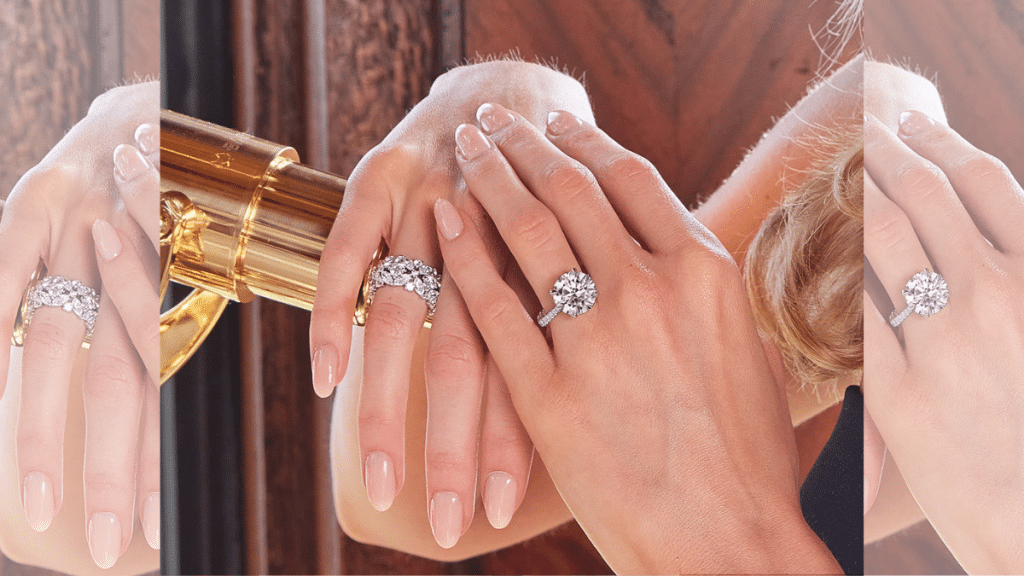Choosing a diamond is like curating your signature scent or picking out your dream dress—it’s personal, powerful, and, yes, slightly overwhelming. If you’re exploring the world of lab-grown diamond engagement rings, you’ve probably come across a little detail that makes a big difference: clarity.
But don’t worry, we’re about to make diamond clarity as easy to understand as a glass of sparkling water—clear, refreshing, and full of sparkle.
First Things First: What Is Diamond Clarity?
Clarity refers to the tiny internal or surface characteristics that form when a diamond is created. Think of them as a diamond’s birthmarks. These are known as inclusions (inside the diamond) or blemishes (on the surface).
In lab-grown diamond engagement rings, these natural imperfections can range from nearly invisible to slightly noticeable under magnification. Clarity is rated on a scale, ranging from Flawless (FL) to Included (I1–I3), with various stops along the way—like VVS (Very, Very Slightly Included) and VS (Very Slightly Included).
But here’s the kicker: to the naked eye, diamonds in the VS and VVS range often look exactly like the ones marked as Flawless.
The Sweet Spot: Best Clarity for Maximum Sparkle
So what’s the best clarity grade for a lab-grown diamond engagement ring?
Answer: VS1 to VVS2 is the clarity sweet spot.
Why? These grades offer a flawless appearance to the eye without commanding the high premium of the top-tier grades like FL or IF (Internally Flawless). They’re clean, brilliant, and photograph like a dream—aka perfect for proposal pics.
Let’s break it down even further by carat weight, because let’s be real—size matters too.
For a 1-Carat Lab-Grown Diamond
At this size, clarity is more forgiving. A 1-carat lab-grown diamond with a VS2 clarity or even a well-cut SI1 can still look stunning. The diamond is smaller, so inclusions are less likely to be noticeable—especially with the right setting. Want sparkle on a smart budget? This is your zone.
Pro tip: Consider a halo or pavé setting to amp up brilliance and subtly hide any minor imperfections.
For a 2-Carat Lab-Grown Diamond
Here’s where clarity steps into the spotlight. A 2-carat lab-grown diamond is big enough that any noticeable inclusions might catch your eye—especially in step-cut styles like emerald or Asscher, which have open, mirror-like facets.
Aim for VS1 or better in these shapes. For brilliant cuts like round, cushion, or oval, you can sometimes go with a clean-looking VS2.
Design idea: Opt for a solitaire or three-stone setting to let the stone take center stage—just make sure the clarity keeps up with the size.
For a 3-Carat Lab-Grown Diamond
If you’re rocking a 3-carat lab-grown diamond, first of all—yes, queen. At this level, clarity matters more than ever. With more surface area, inclusions can be easier to spot, so VVS2 or even VVS1 is a safe bet to maintain that flawless, jaw-dropping shine.
Style match: A 3-carat stone pairs beautifully with minimalist bands or east-west settings for a bold, modern aesthetic.
Remember: It’s Not Just Clarity That Counts
Clarity is only one slice of the sparkle pie. Don’t forget to balance it with the other C’s: Cut (hello, brilliance), Color (icy or warm?), and Carat (your moment, your size).
In fact, a perfectly cut diamond with slightly lower clarity can look more brilliant than a flawless diamond with a mediocre cut. So while VVS1 sounds dreamy, a VS1 with an excellent cut might just outshine it.
Final Word: Clarity Meets Confidence
Choosing the best clarity for your lab-grown diamond engagement ring doesn’t have to be intimidating. If you’re looking at a 1-carat lab-grown diamond, you’ve got more flexibility. For a 2-carat lab-grown diamond, go VS1–VVS2 to keep things flawless at a glance. And for a 3 carat lab-grown diamond, you’re playing in the big leagues—VVS is your best friend.
At the end of the day, the best clarity is the one that makes your heart skip a beat. Because whether it’s sparkling under candlelight or catching sunlight during a casual coffee run, your diamond should reflect not just light—but your story.
